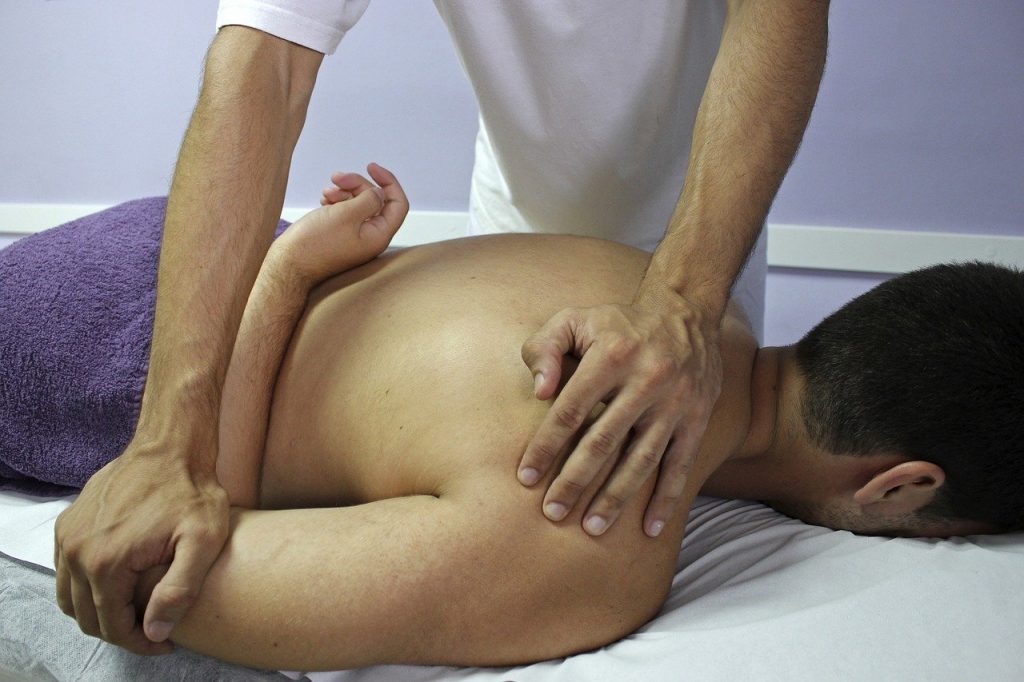
Stretching, moving, massaging of muscles and joints helps to detect, treat and prevent health problems, health problems and is called Osteopathy.
The principle behind osteopathy is that an individual’s well being is dependent on the smooth functioning of their muscles, bones, ligaments and their connective tissues, all working together.
Physical manipulation, massage and stretching is used by osteopaths with the aim of:
- Increasing joint mobility
- Relieving muscle tension
- Enhancing tissue blood supply
- Helping the body to heal
Osteopaths use a whole range of techniques that do not include drugs or require surgery to be performed.
The United Kingdom has laws that regulate the health profession that Osteopaths practice.
Osteopaths do use some of the medical techniques used by doctors, but the practice of osteopathy is not always based on any scientific evidence.
What Happens When You Visit an Osteopath?
People who visit Osteopaths do so because then need help for conditions that have affected their joints, muscles, and bones and can be:
- Lower back pain
- Neck pain that is not complicated, like any pain in the neck due to accidents or whiplash
- Pain in the shoulder or elbow pain, like tennis elbow
- Arthritis
- Problems in the hips, legs, and the pelvic area
- Injuries caused by sports
- Joint and muscle pain that comes from pregnancy, working or driving.
If you are pregnant and need to see an osteopath, it’s best to take the advice of your midwife or GP. There are osteopaths who specialise in treating pregnant women for joint and muscle pain, and they are the ones you should see.
There are osteopaths who also treat conditions that have no link with the joints, muscles and bones; they will treat migraines, headaches, digestive disorders, painful periods, depression and babies who cry excessively because of colic (used in conjunction wit Paediatric Dietetics in Hampshire then osteopathy can be really effective at relieving colic).
However, there is no real evidence that osteopaths will help in the treatment of these problems.
Does Osteopathy Work?
NICE, The National Institute for Health and Care Excellence does recommend exercise as well as manual therapy as alternatives for treating lower back pain that comes with or without sciatica.
The evidence that osteopathy is effective for pain in the neck, shoulder, lower limbs, or for recovering after hip and knee operations, is limited.
There is also not enough evidence that it is treatment that is effective for health conditions that are not related to the musculoskeletal system that is made up by the bones and muscles.
What Other Evidence Do We Have on Osteopathy?
Osteopaths are not widely available on the NHS, but your local clinical commissioning group, or your GP can be able to tell you if there is one in your area.
Payment for osteopathy is paid privately by most people. Costs of treatment can vary and for sessions that last 30 to 40 minutes, can be in the range of £35 to £45.
If you want to see an Osteopath privately, you do not need a reference from a GP. Private health insurers do cover osteopathic treatment.
Osteopaths have to be registered with the General Osteopathic Council so that they can call themselves as Osteopaths.
Your first session of osteopathy will have the Osteopath asking you abut your general health, your symptoms, and other medical care you may be under, after which a physical examination will be conducted.
To find any areas of tenderness, weakness, strain or restrictions within your body, the osteopath will use their hands.
You will have to consent to remove some clothing to allow this examination and also be asked to make some simple movements.
There will then be a discussion on whether the Osteopath can help with the problem, and if this possible, the treatment that will be involved.

